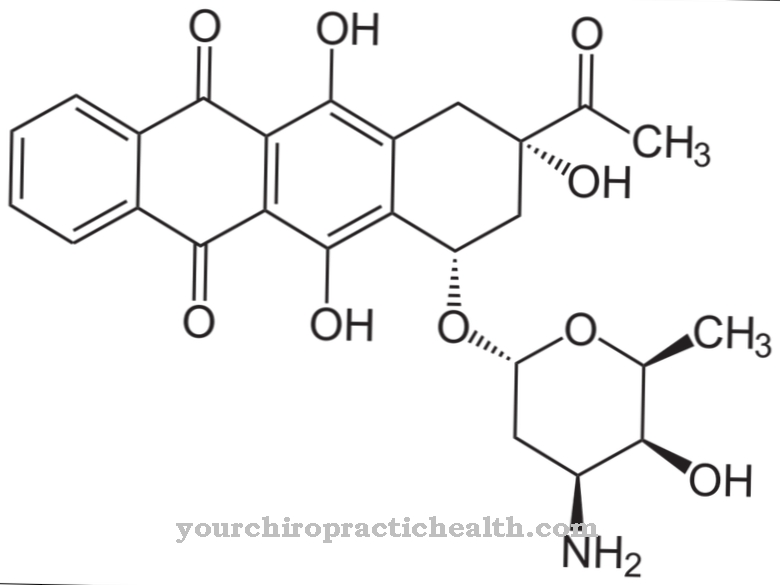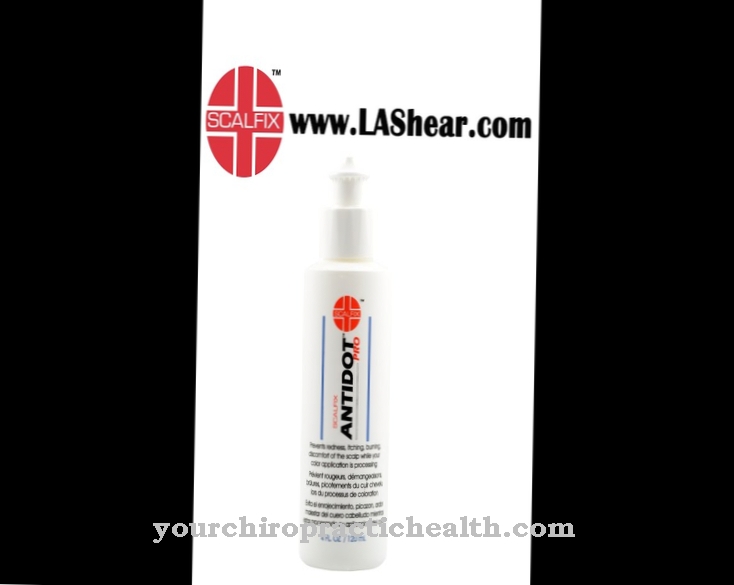The medicinal substance Ranitidine serves to protect the stomach. He belongs to the H2 antagonists.
What is ranitidine?

Ranitidine is a drug that is one of the H2 antihistamines. It is used to treat reflux diseases, to prevent gastric ulcers and to control stomach acid in heartburn. In addition to human medicine, veterinary medicine also uses ranitidine.
Ranitidine is related to drugs such as nizatidine, cimetidine, roxatidine and famotidine. The agent attaches itself to H2 receptors in the stomach and blocks them.
Ranitidine can also be purchased in low doses from pharmacies without a prescription. In higher doses, however, the drug is subject to a prescription. Although ranitidine is considered to be well tolerated, it is only a second-line therapeutic agent. The effect of the drug is lower than that of proton pump inhibitors (PPIs). In addition, after stopping ranitidine, the stomach will make more acid again. This threatens a renewed inflammation. The application of the agent should not be carried out for more than seven days without medical supervision.
Pharmacological effect
The stomach acid is produced in the parietal cells of the stomach. As an H2 antagonist, ranitidine has the property of inhibiting the production of gastric acid. The active ingredient competes with the tissue hormone histamine at the histamine 2 receptors. The histamine releases digestive enzymes and activates acid formation. On the other hand, H2 antagonists slow down the formation of gastric acid, which in turn has a protective effect on the stomach. In this respect, ranitidine has an antagonistic (opposite) effect to histamine. The gastric juice can therefore be neutralized by using ranitidine, which makes it less aggressive to the stomach and other organs such as the small intestine and esophagus. This procedure can effectively treat heartburn and inflammation.
Even at a low dose, ranitidine causes the activity of the gastric parietal cells to decrease. This leads to a lower release of hydrochloric acid within the stomach, which reduces the symptoms. However, the effect of proton pump inhibitors is much stronger. They can inhibit up to 90 percent of gastric acid production, while ranitidine only reaches a maximum of 50 percent.
Medical application & use
Ranitidine is used for stomach inflammation and gastric ulcers. The same applies to ulcers and inflammation on the duodenum. Other indications are esophagitis (inflammation of the esophagus), gastritis (inflammation of the lining of the stomach) and reflux diseases, which are manifested as heartburn.
Ranitidine is also used in veterinary medicine for the treatment of gastrinoma such as Zollinger-Ellison syndrome, mast cell tumors and mastocytosis.
As part of a cortisone treatment, ranitidine can be administered to protect the stomach. It also makes sense to use the active ingredient in pain treatment with NSAIDs (non-steroidal anti-inflammatory drugs). With prolonged use, these often cause heartburn, stomach pain or stomach bleeding.
Another area of application for ranitidine is allergy prophylaxis before operations. The agent is administered together with an H1 blocker.
For heartburn and acid-related pain, the recommended dose of ranitidine is 75 milligrams, which can be given up to four times a day. The duration of treatment takes four weeks. This dosage is also suitable for self-treatment. If, on the other hand, there is a stomach or duodenal ulcer, the daily dose is between 300 and 600 milligrams, taken once or twice a day. To prevent the ulcer from re-forming, the patient should be given 150 milligrams of ranitidine per day.
You can find your medication here
➔ Medication for heartburn and bloatingRisks & side effects
Ranitidine is classified as a well-tolerated agent. Patients rarely suffer from undesirable side effects such as nausea, vomiting, diarrhea, gastrointestinal complaints, cardiac arrhythmias, joint pain, headaches or dizziness. In some cases, skin rashes, constipation, tiredness, hypersensitive reactions and changes in the blood count such as thrombocytopenia or leukocytopenia may occur. Gynecomastia, erythema multiforme and states of confusion are considered rare undesirable side effects.
Ranitidine must not be used at all if the patient is hypersensitive to the drug. Acute porphyria (liver disease) is also a possible contraindication. During pregnancy or breast-feeding, it is recommended that ranitidine only be taken if the benefit and risk have been carefully weighed beforehand. Temporary impairments of the baby cannot be completely excluded. The administration of ranitidine to children under ten years of age is not suitable.
There is a risk of interaction with ranitidine. The absorption of other medicinal substances is negatively influenced by the agent. This includes, for example, the anti-fungal agent ketoconazole, the positive effect of which suffers from ranitidine. The H2 antagonist also increases the effect of the anesthetic midazolam, the asthma preparation theophylline, the blood sugar-lowering agent glipizide and the psychotropic drug triazolam. In addition, ranitidine also increases the effects of alcohol.













.jpg)

.jpg)
.jpg)











.jpg)